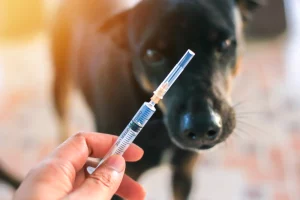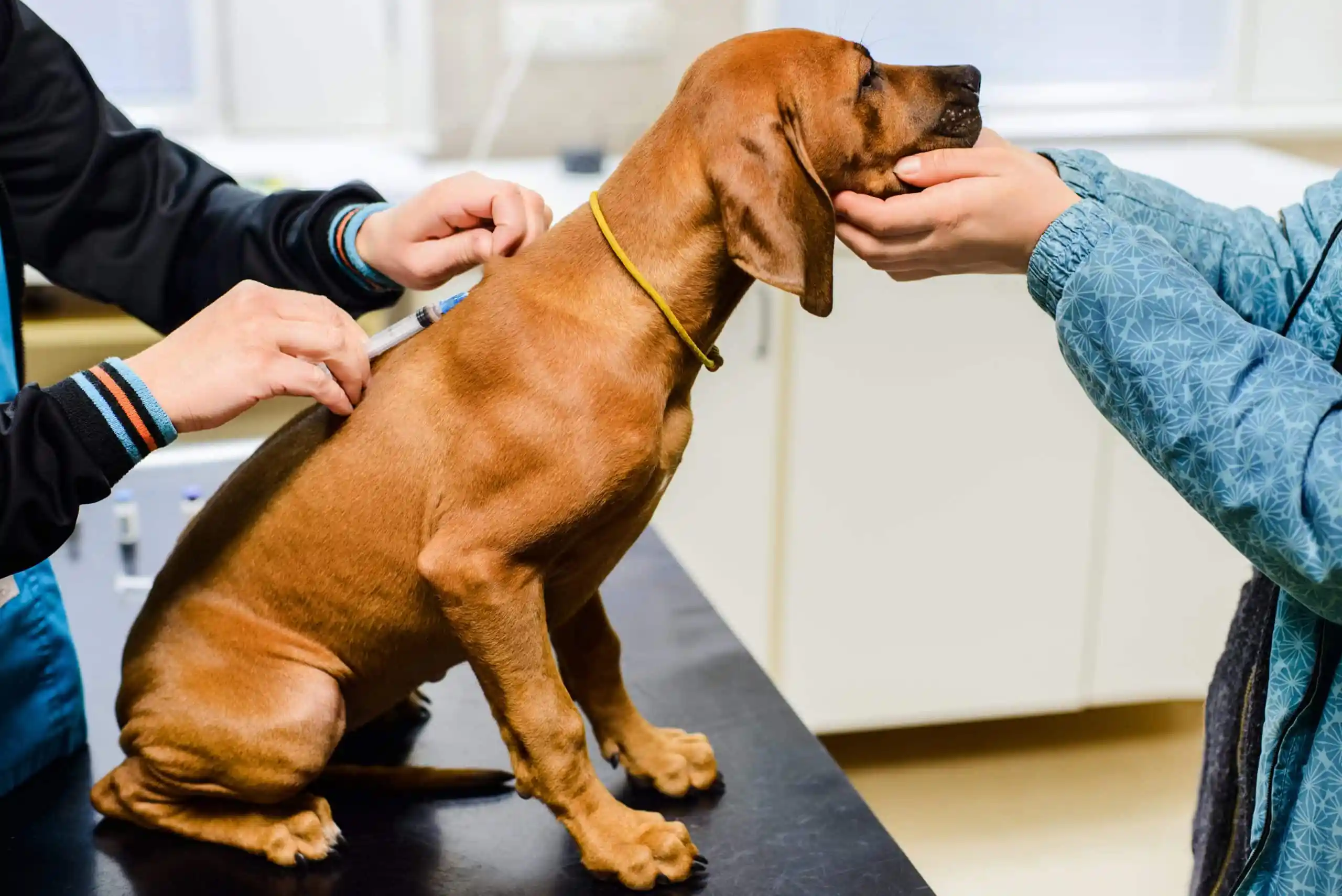Active pet owners, particularly those engaged in sports, may find themselves needing to administer injections to their dogs for various health reasons. Understanding the correct procedures and necessary supplies is vital for ensuring the safety and well-being of their pets. By following a structured approach, sportsmen can confidently manage these tasks at home. However, several aspects require careful consideration to avoid complications. Exploring these essential tips can make a significant difference in the experience for both pet and owner.
Key Takeaways
- Ensure you have all essential supplies ready, including sterile syringes, prescribed medication, alcohol wipes, and a sharps container for safe disposal.
- Create a calm environment for your dog, using comfort techniques to reduce anxiety before administering the injection.
- Follow a step-by-step guide to injections, including skin pinching, proper needle angle, and checking for blood before injecting.
- Monitor your dog closely after the injection for any adverse reactions or changes in behavior, appetite, or energy levels.
- Always consult your veterinarian for specific instructions and guidance related to your dog’s health needs and medication.
Understanding the Need for Injections in Dogs
Understanding the need for injections in dogs is essential for pet owners, especially those who actively participate in sports and outdoor activities with their canine companions. Injections are often necessary for vaccinations, treating specific health conditions, or managing chronic illnesses. For active dogs, timely vaccinations can prevent serious diseases, ensuring they remain healthy and ready for exercise. Additionally, administering medications through injections can provide faster and more effective relief compared to oral options. Consequently, pet owners should consider giving injections to dogs at home as a viable option, provided they are well-informed and prepared. This knowledge empowers owners to maintain their dog’s health proactively, fostering a stronger bond between them as they share their adventurous lifestyles.
Essential Supplies for Giving Injections at Home
To successfully administer injections to dogs at home, pet owners must gather essential supplies that guarantee both safety and effectiveness. Key items include sterile syringes and needles, which are fundamental for preventing infections. It is also necessary to have the prescribed medication ready, ensuring it is stored correctly prior to use. Alcohol wipes play an important role in sanitizing the injection site, while cotton balls can help manage any bleeding post-injection. A sharps container is crucial for the safe disposal of used needles and syringes, promoting responsible practices. Additionally, having a calm and comfortable space for the dog can ease the process. By assembling these supplies, pet owners can approach giving injections to dogs at home with confidence.
Step-by-Step Guide to Administering Injections
After gathering the necessary supplies, the next step involves a systematic approach to administering injections to dogs at home. First, make sure the dog is in a calm and comfortable position. Gently pinch the skin at the injection site to create a fold. With the dominant hand, hold the syringe like a pencil and quickly insert the needle at a 45-degree angle into the fold. Once the needle is in, pull back slightly on the plunger to check for blood, making certain the needle is not in a blood vessel. If clear, inject the medication steadily. Withdraw the needle swiftly and apply gentle pressure with a cotton ball. Finally, reward the dog with praise or treats to create a positive association with the experience.

Common Mistakes to Avoid When Giving Injections
While giving injections to dogs at home can be a straightforward process, several common mistakes can undermine the safety and effectiveness of the procedure. One frequent error is failing to prepare the injection site properly, which can lead to infection. Additionally, using expired or improperly stored medications can jeopardize the treatment’s efficacy. Pet owners often rush the process, leading to incorrect needle placement or dosage errors. Guaranteeing a calm environment for both the dog and the owner is essential; distractions can result in mishaps. Finally, neglecting to follow the veterinarian’s instructions regarding timing and technique may lead to complications. By avoiding these pitfalls, active pet owners can guarantee safer experiences when giving injections to dogs at home.
Post-Injection Care and Monitoring Your Dog
Following the administration of an injection, careful post-injection care and monitoring are vital to guarantee the dog’s well-being. Pet owners should observe the dog for any signs of adverse reactions, such as swelling, redness, or unusual behavior. It is essential to keep the injection site clean and dry to prevent infection. Offering comfort and reassurance can help alleviate any anxiety the dog may experience following the injection. Additionally, monitoring the dog’s appetite and energy levels is important; any significant changes may warrant a consultation with a veterinarian. By being attentive and proactive in post-injection care, sportsmen can ensure their dogs remain healthy and comfortable after giving injections to dogs at home.
Frequently Asked Questions
Can I Give Injections to My Dog Without Professional Training?
The question of whether one can give injections to a dog without professional training raises concerns. Proper knowledge and techniques are essential to guarantee the pet’s safety and well-being during the injection process at home.
What Types of Injections Can I Administer at Home?
Various injections can be administered at home, including insulin for diabetes, vaccines, and medications prescribed by veterinarians. Proper training and guidance are essential to guarantee safety and effectiveness when giving injections to dogs at home.
How Can I Calm My Dog Before Giving an Injection?
To calm a dog before giving an injection, one should guarantee a quiet environment, use gentle petting, speak softly, and offer treats. Consistent handling and positive reinforcement can help create a more relaxed atmosphere for the dog.
Are There Specific Breeds That React Differently to Injections?
Certain dog breeds may exhibit varying reactions to injections, influenced by factors such as size, temperament, and health conditions. Understanding these differences aids owners in providing tailored care and ensuring a smoother injection experience for their pets.
What Should I Do if My Dog Resists the Injection?
If a dog resists an injection, the owner should remain calm, use gentle restraint, and consider rewarding the dog afterward. Creating a positive environment can help ease anxiety and promote cooperation during future injections.
Conclusion
In summary, active pet owners can confidently administer injections to their dogs at home by following established guidelines. Understanding the necessity of injections, gathering essential supplies, and adhering to a systematic approach can guarantee the procedure is safe and effective. By avoiding common mistakes and providing proper post-injection care, sportsmen can support their dogs’ health while fostering a strong bond. Ultimately, seeking veterinary advice when needed remains vital for the well-being of the pet.
You May Also Like To Read:

